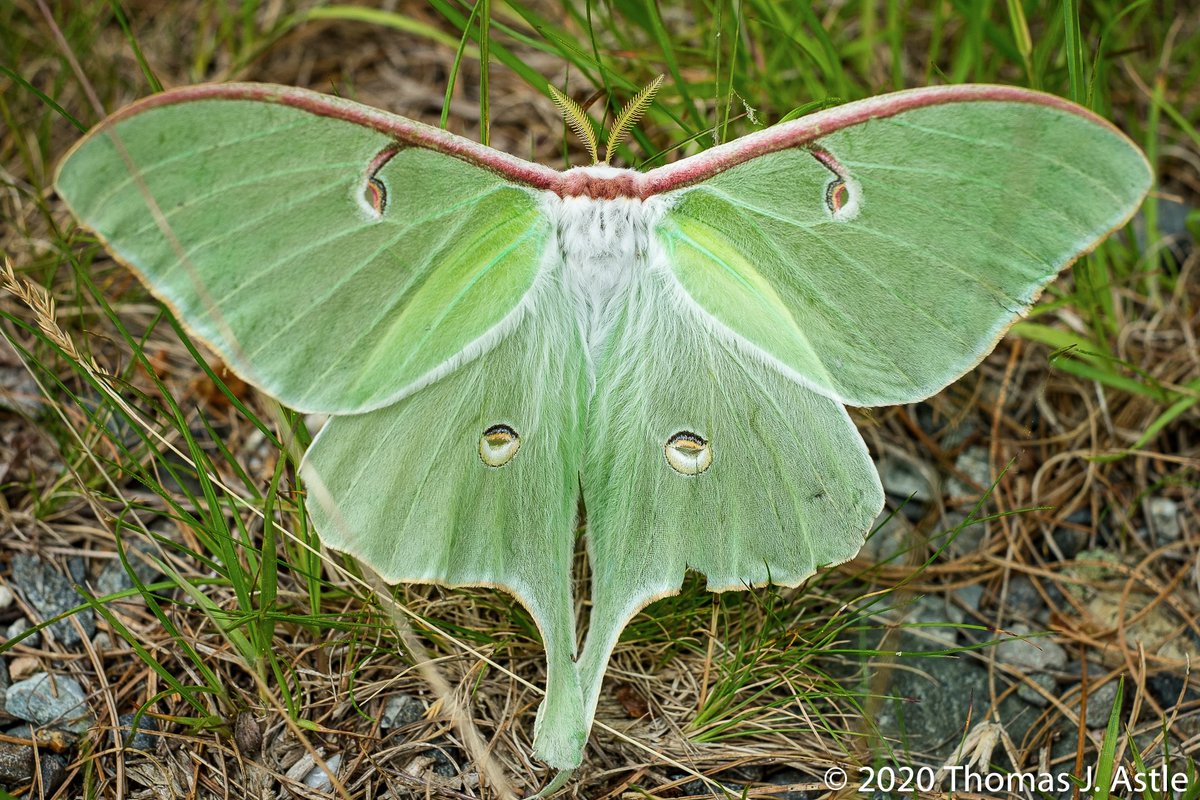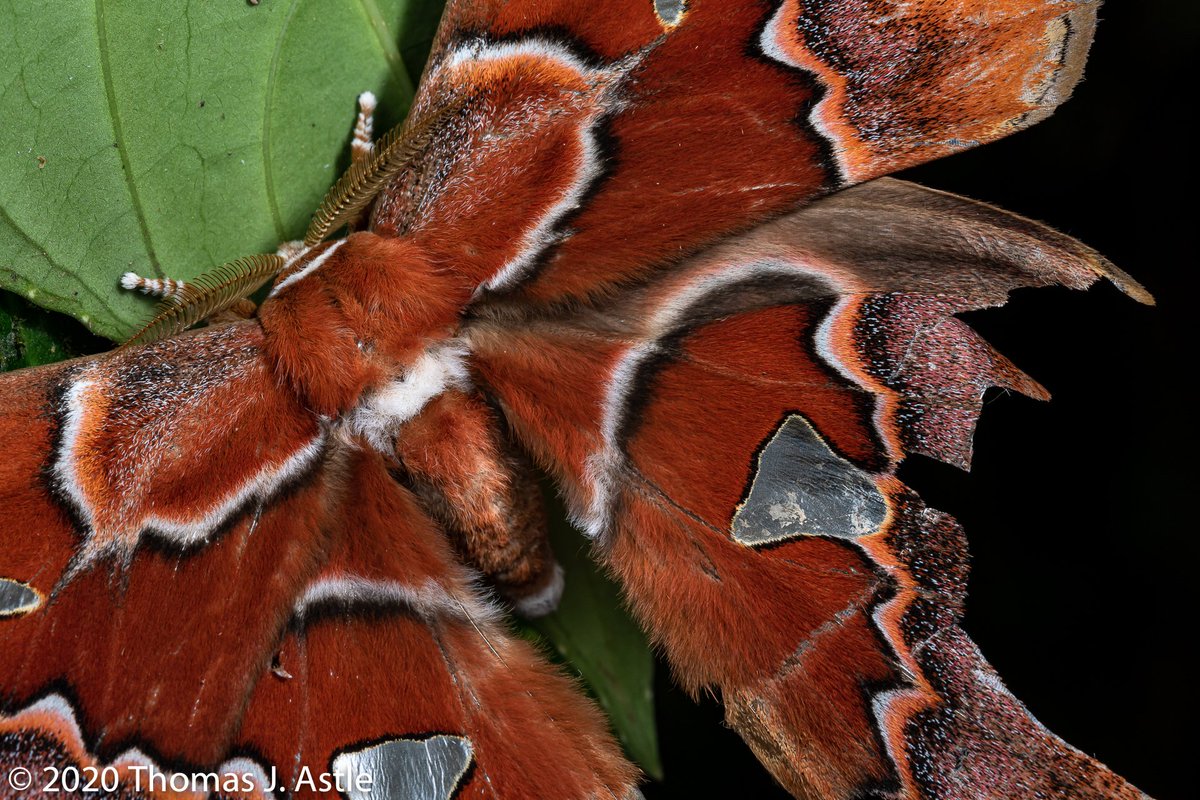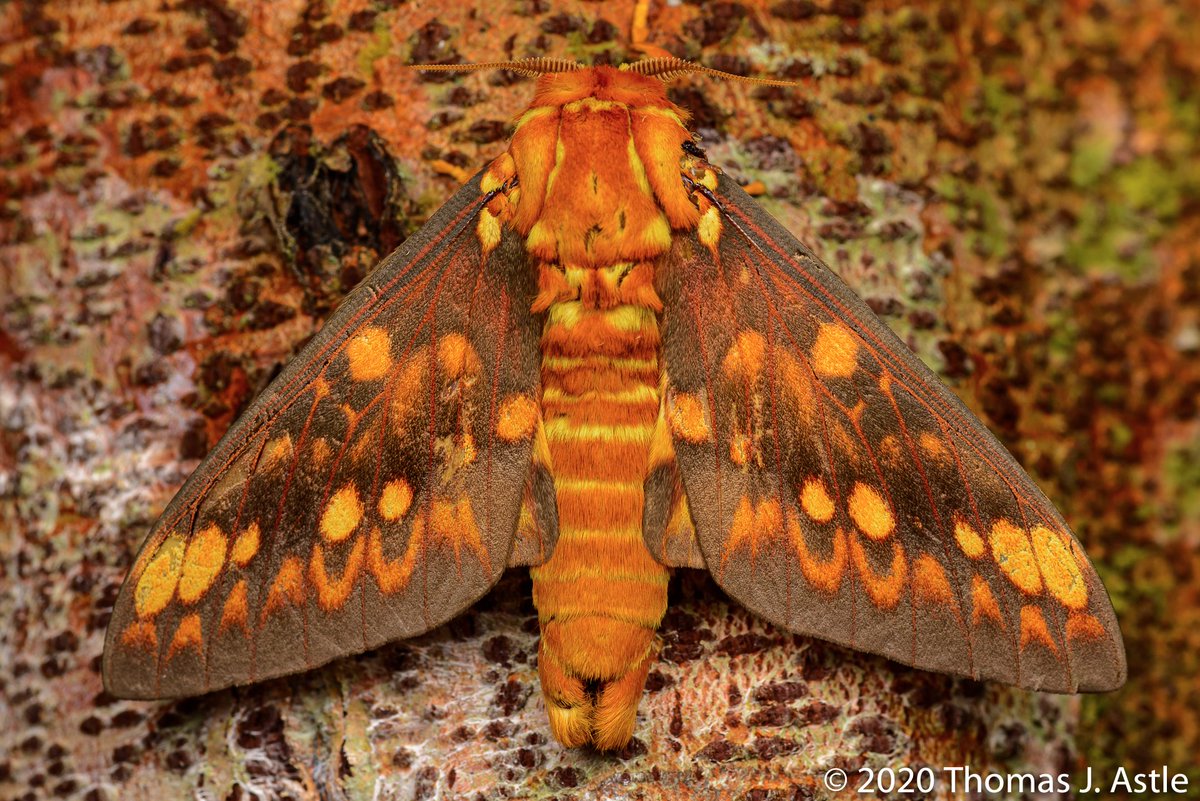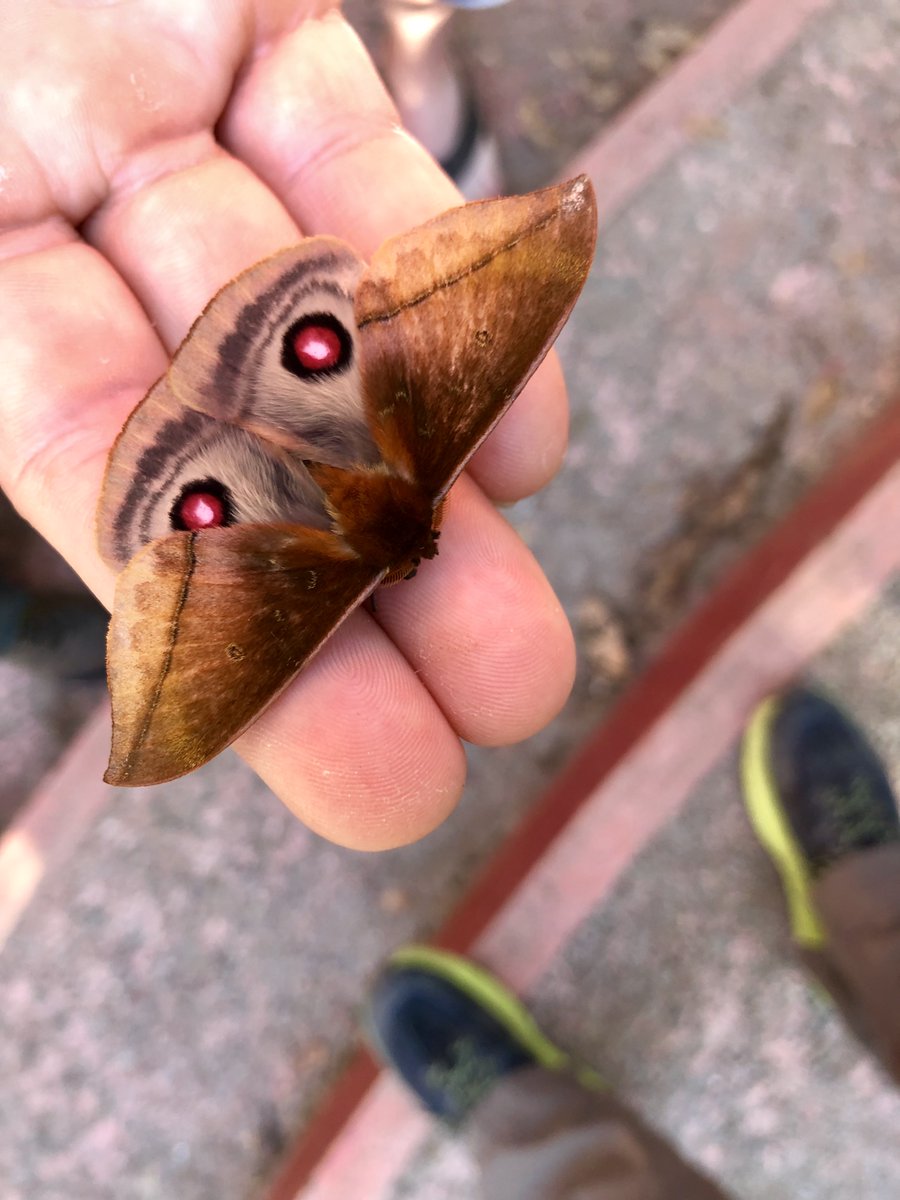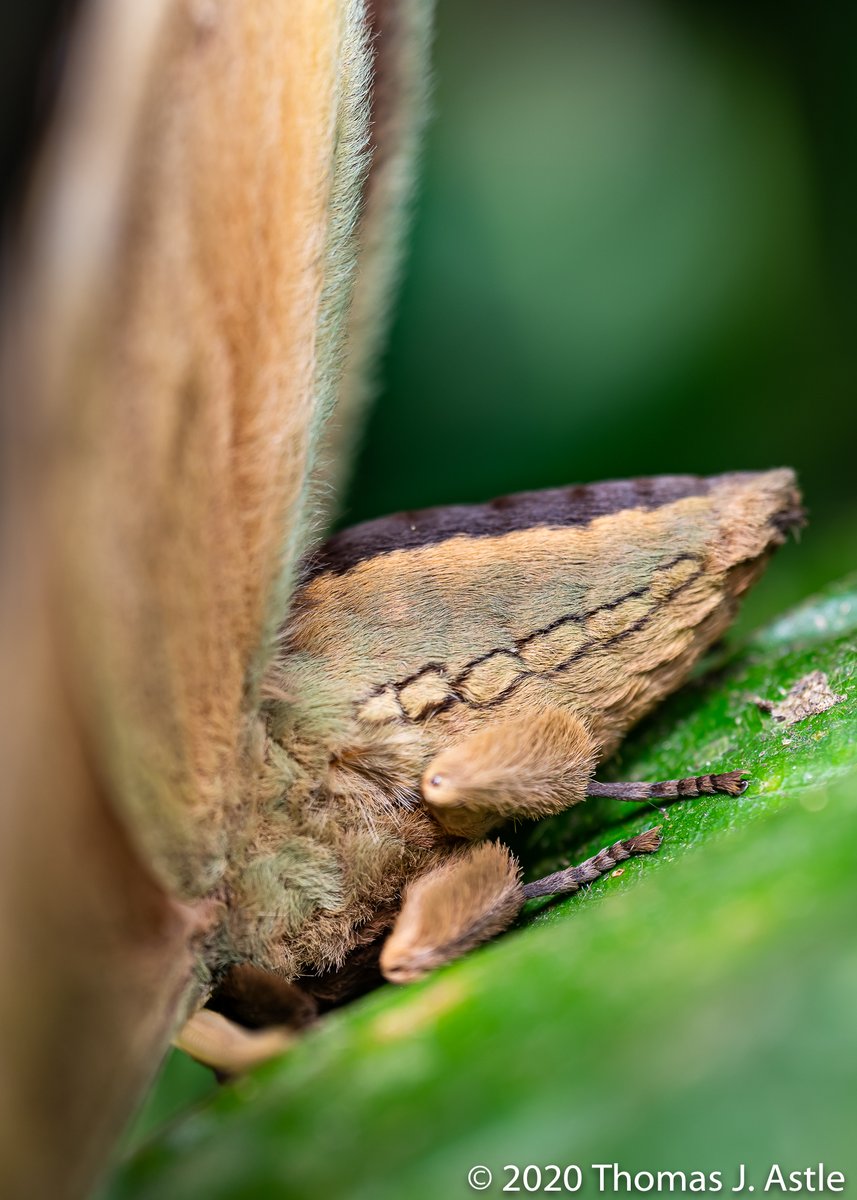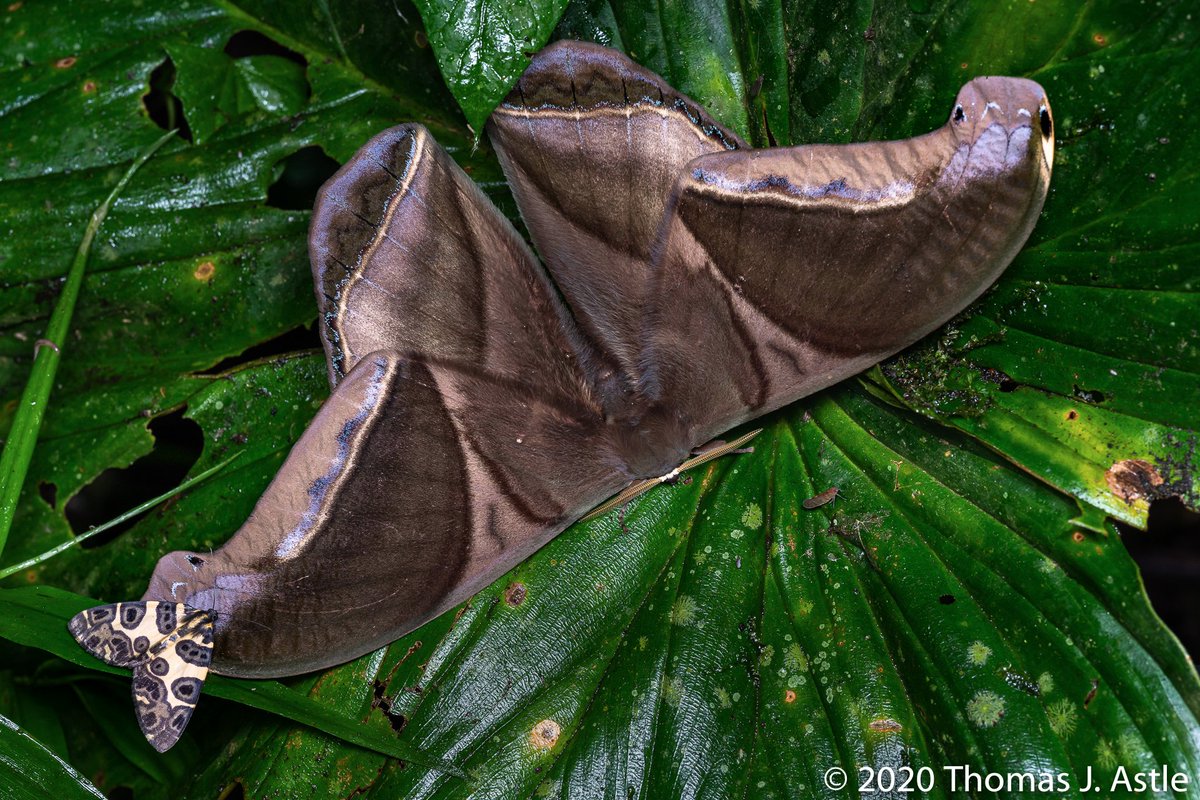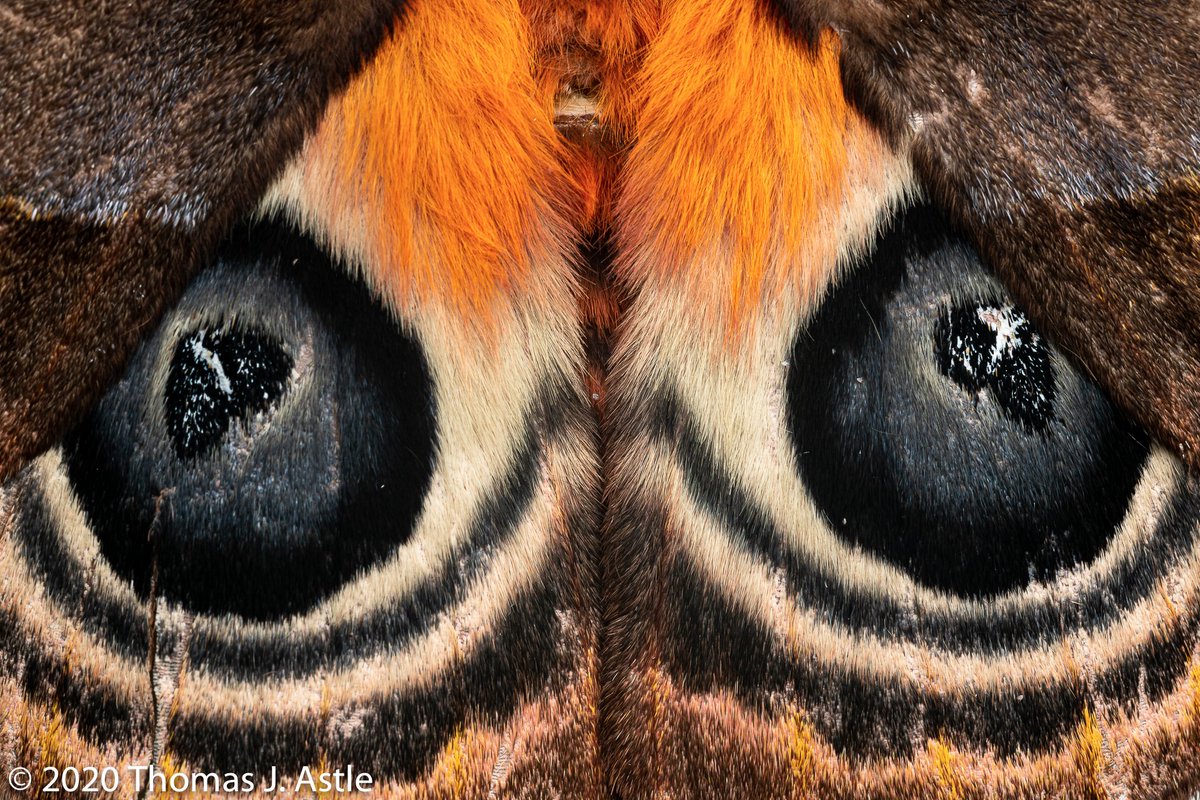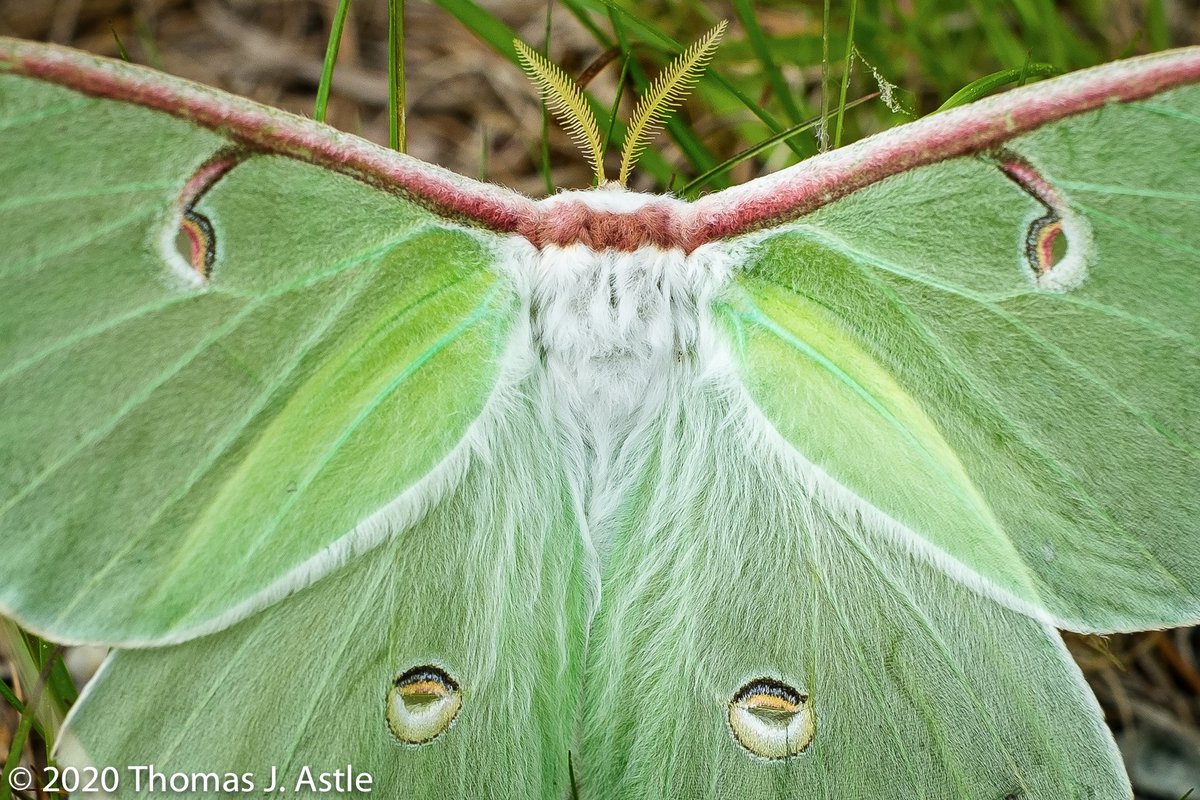(Thread) This is a Luna Moth, the first and only one I& #39;ve seen in the wild. I& #39;ve liked bugs (and reptiles/birds/fish and... but this is about bugs) since I was a kid. I collected insects and spiders, I had a room full of terrariums & aquariums, and I consumed field guides like--
--they were comic books. The field guides were also wish lists, full of amazing creatures that lived, it seemed to me, always somewhere else, never near me in Montana. And if there was one insect I wanted to see more than any other, it was this one from exotic eastern N. America.
Luna moths are in a group called giant silk moths, part of the moth family Saturniidae. The family name and several species& #39; common and/or scientific names are taken from Greek & Latin mythology: Saturn, Atlas, Luna, Cecropia, Polyphemus, Io, Promethea. Myth-moths. That was--
--the Luna moth for me. It existed only in the pages of my bug books. Saturniids are often big and impressive, but are short-lived. Once adults emerge from the pupal stage, they survive only a few days, usually less than a week. They literally can& #39;t eat: they have reduced--
--mouthparts and no working digestive system. To find each other to mate in such a short window, females usually don& #39;t fly at first, but instead emit pheromones which males detect with their large, feathery antennae. The males fly to the females, then after mating the females--
--fly off to lay eggs. I think that& #39;s what& #39;s going on with this Saturniid in Ecuador, btw - she stayed in this spot for two days before she disappeared, presumably then having mated. When people hear about these moths& #39; brief lives, the reaction is usually, "That& #39;s so sad." But--
--it& #39;s a common phenomenon in the insect world. Mayflies and cicadas, for instance, are famous for having longer (sometimes much longer with some cicadas) nymphal or larval stages, then living only briefly as breeding adults. It& #39;s an existence that is utterly foreign to us as--
--vertebrates; we are children for only a small portion of our lifespans. But many insects& #39; primary form is the larval stage. In a way, you could say that these insects aren& #39;t really moths at all. They are actually caterpillars which happen to have an extremely brief stage--
--in which we call them moths and in which they can fly and reproduce, thus making more caterpillars. So, back to the Luna Moth. A few years ago, I visited--
--an old high school friend who now lives in Maine. While there we went to Acadia Natl. Park. As he drove us into the park, I happened to glance to my right, and at 40 miles an hour I noticed a small flash of pale green in the darker green grass alongside the highway. My brain--
--must have pattern-matched to my childhood field guides, because I said, without thinking, "Luna Moth." I asked my friend to stop and turn back, and I was right. It was about thirty feet off the road and was stuck, grounded, unable to take off in the--
--short grass because its large wings couldn& #39;t flap a down-stroke. So after a couple of photos (I can& #39;t believe I didn& #39;t move the grass stem out of the way of the left wings, but I was excited and wasn& #39;t thinking like a photographer), I let the moth crawl onto my hand.
You don& #39;t have to like bugs to like a bug like this. My friend had never seen one either, and was amazed by it as well. He even ran to two young women who were walking on a path nearby and made them come over to look. After we all had a chance to admire it up close--

 Read on Twitter
Read on Twitter